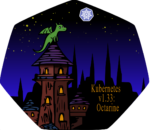
The average lifespan of a container is a mere two days. That was among eight surprising findings revealed in a survey by Datadog, the application monitoring solution provider, and released this week at DockerCon18 in San Francisco.
Datadog took a sampling of its customer base, representing more than 10,000 companies and 700 million containers, the company said. In its report on the survey, Datadog explained that unusual uses of Docker, and the fact that it polled its own customers, created a large but imperfect sample of the market. That said, the findings do reflect an industry coming to terms with the new software architecture.
Datadog found that Docker adoption among its customers was at 23.4 percent as of April, up from 20.3 percent a year earlier. About 8 percent of its customers tried and abandoned Docker, while about 13 percent of customers are “dabbling” in it, meaning they have used Docker during the month but did not reach the “adopter” threshold. Datadog defines that as “the average number of containers running during the month was at least 50 percent the number of distinct hosts run, or there were at least as many distinct containers as distinct hosts run during the month.”
The number of hosts running Docker increased to about 21 percent as of April, continuing a rate of increase of about 5 percentage points per year, according to the report. The results also show that the more hosts a company has, and the larger its infrastructure deployments, the more likely it is to have adopted Docker. Of companies with at least 1,000 hosts, 47 percent have adopted Docker, the survey found.
In those companies, Docker is being run as part of a larger containerization strategy that includes automated orchestration of workloads. The report said, “Roughly half of the companies that monitor Docker with Datadog now also monitor an orchestrator such as Kubernetes or Mesos, or a hosted orchestration platform from AWS, Azure or Google Cloud Platform.” Among Datadog’s customer base, Kubernetes – not surprisingly – is the fastest-growing orchestration technology.
The survey also found that orchestrated containers churn 12 times faster than unorchestrated containers. Orchestrated containers churn at a rate of 0.5 days, while unorchestrated containers have a rate of 6 days. Containers also churn tens of times faster than hosts, whose lifespan can be measured in months, according to Datadog. This, the company said, represents “an order-of-magnitude increase in the number of components that must be managed and monitored, and the rapid churn of containers makes it all but impossible to track and monitor containers manually.”
Other findings include that the average size of a Docker deployment has grown 75 percent in a year; the most widely used Docker images are Nginx, Redis and Postgres; and the median company adopting Docker runs eight containers simultaneously per host.








